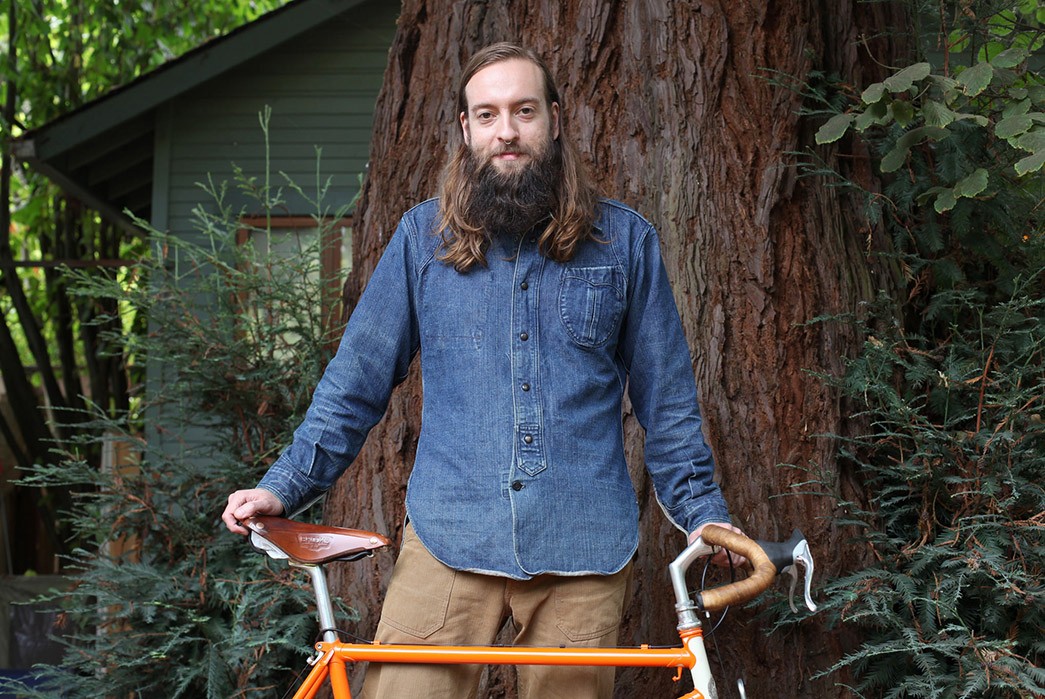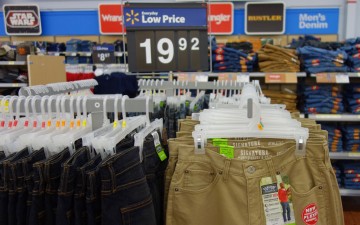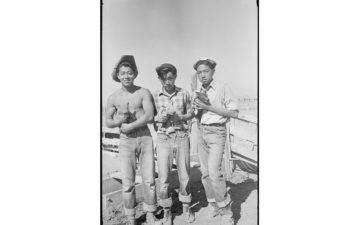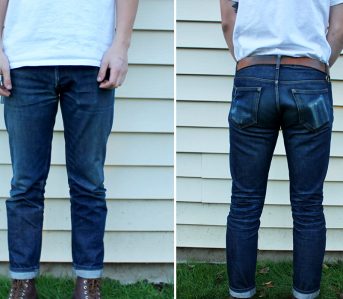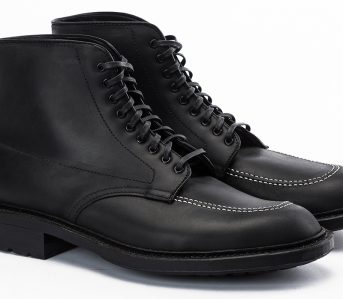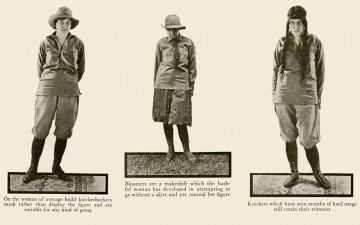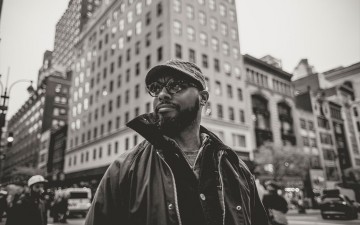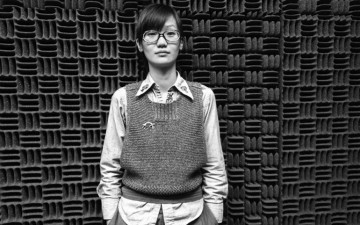I met leatherworker Nicholas Hollows of Hollows Leather in 2008. We followed each other on the image sharing website flickr and crossed paths on the Bridgestone Ownership Bunch forum for bicycles. Related to Rivendell, we share a love of steel bicycles, purpose-driven design and Grant Peterson musings.
Hollows later worked with Archival on several collaborative projects including a Flap Wallet that landed in the pages of GQ. In my interview with Hollows, we discuss how Hollows started his company, learned his trade, and stays in business as the workwear movement fades as the dominant menswear trend. We discuss the pitfalls of custom orders, favorite Japanese brands, and the “decay of attribution.”
Lesli Larson: How would you describe Hollows Leather?
Nick Hollows: Durability, and some sort of timelessness in design, is one of the guiding principals of my work. I really like to imagine somebody one day finding something I made in an antique shop and being able to spot it as something that was made with care. I try to make stuff that already feels like an artifact which means using designs that aren’t always specific to a particular era.
LL: Why leather?
NH: I don’t think there really is a why leather. I think that I would be pretty happy working in other mediums. It just happens to be that leather was the craft that came along at the right time and meshed well with my circumstances. Originally, I was working as a bike mechanic and hoping to build bike frames. I had completed a brazing class at UBI (United bike Institute) and was looking at buying torches and jigs.
I ended up coming across a box of scrap leather and tools at the same time that my wallet was falling apart. I made a wallet for myself; I made a few more until I had a wallet that I was happy with. I feel like my mind works well with putting things together and taking them apart which is the link between bicycle mechancic work and framebuilding. I think that this is the common thread that ties the bike stuff to the leather stuff. Everything else about leatherwork is a learned skill.
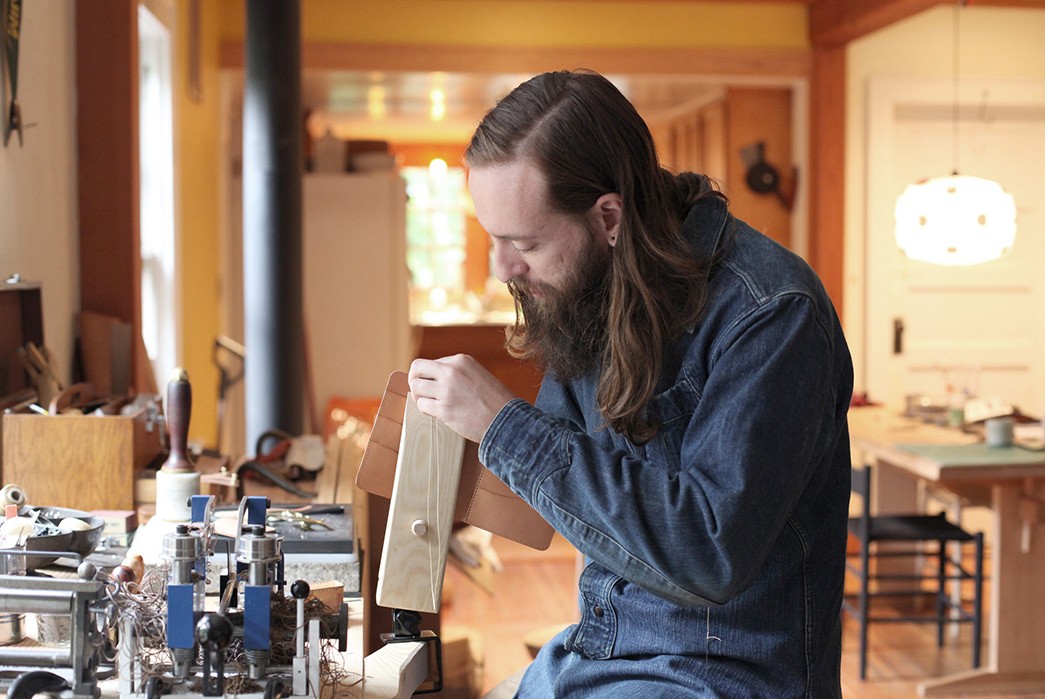
Hollows at his work bench in Eugene, Oregon.
LL: Walk me through your process for starting a new design or project.
NH: There are two ways that a new product idea will come around: either to fill a personal need of my own and then to design a solution or to rework an older design. Periodically, it is good to revisit designs because I am learning new things about a craft and there are better ways to do things. I try not to let any design sit for too long without at least taking a hard look at them which sometimes leads to a new product (rather than a refinement).
LL: How do you educate yourself about the history of your craft?
NH: The history of leather craft isn’t really a history of the kinds of products that I make. The history of really hands-on leather craft is more about things like saddles and equestrian gear. There’s been wallets for a long time but I don’t think there’s really been a point where wallets were a handmade object. They’ve been a luxury object in the context of Luis Vuitton or in the use of exotic leathers. But I don’t think that handmade wallets have a very deep history.
Most of the early wallets I have seen have been mass produced. They were interesting but it wasn’t the same thing as the hand crafted objects that you see now. There was definitely a handcrafted leather boom in the 1970s but I don’t associate it with the same sort of pursuit of quality that you see now. I think it was more of the DIY movement (than what exists as well now). But I think there were a lot of people transitioning from a DIY stage into something more refined where they are really digging deep into how things are made and they are adapting techniques from high end bag makers and applying them to wallets.
As far as the history of the handmade wallet, I think that we owe pretty much everything to Japanese makers like Goro Takahashi. Red Moon was the one that was probably biggest at the time that denim was becoming big in the US around that 2007-2008 mark.
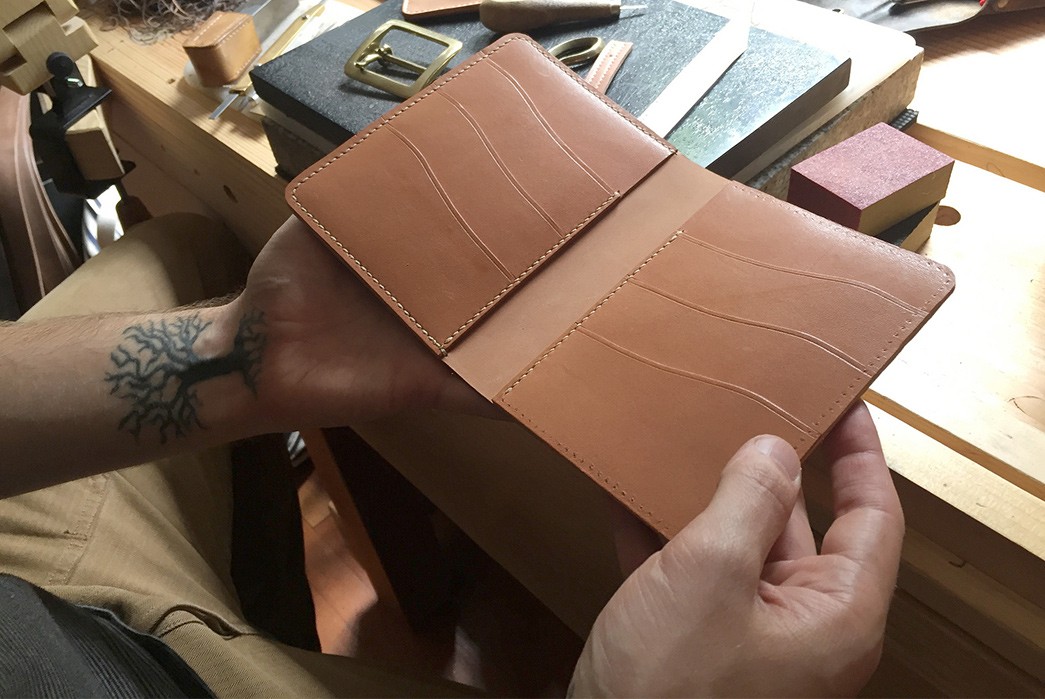
A half-stitched passport wallet in progress.
LL: What was your big break or your biggest hit?
NH: The wallet with Archival in GQ was probably the single media thing that I’ve gotten. It is hard for me to gauge how the hype mill of Pinterest works. I know that a lot of my work gets circulated on Pinterest. I can’t really tell if much of that is coming back to me.
There is a big problem with what William Gibson calls “attribution decay.” According to Gibson, attribution decay occurs on Twitter when “successive retweeting strips out the original twitter.” Social media sites like Tumblr and Pinterest have the same effect for visual information: a photo gets recirculated enough times that it becomes difficult to trace it back to the source. So, despite finding my own photos on Pinterest pretty frequently, I can’t say whether people are linking back to my web site.
LL: Who do you sell to and how do you promote yourself now?
NH: Now, I mainly promote through Instagram. It seems to be the best social media platform for managing all the visual content that goes along with selling leather goods. I also have my own website and email newsletter.
I mainly post Instagram photos of what I’m working on at the time. I don’t have a lot of stock on hand so it is usually a project that I am working on or a project that I have just finished. I try to throw in a little of my personal life as well because I don’t want to be seen strictly as a brand but I also don’t want to make it all about me.
LL: Do you ever envision a Hollows Leather where you are not the only maker?
NH: Possibly. I am definitely entertaining the idea of having someone help with the simpler stuff like belts and keychains. I doubt that I will have anyone else making wallets or larger stuff for me.
I like to collaborate with makers that work in other mediums like Cat Bates who makes brass jewelry. Bates and I worked together on a magnetic clasp bracelet. I also work with Russell Shurtz at Circle-A brand. Shurtz makes the cloth portion of the Bindle Bag. I like the idea of combining forces to bring something to the market that just feels cool enough that it deserves to exist.
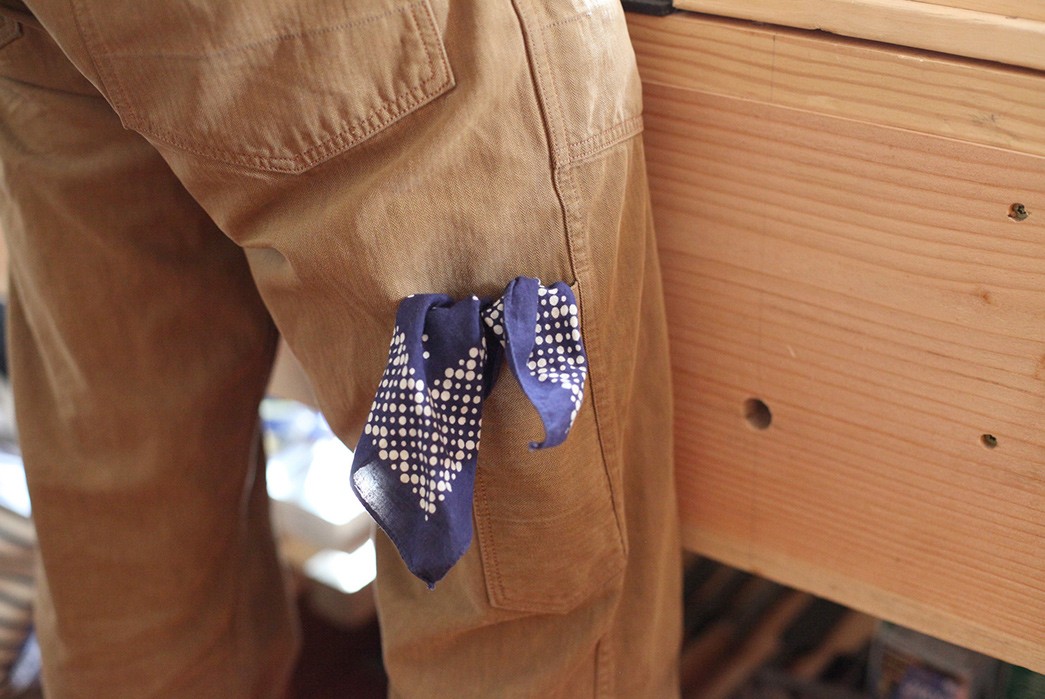
Hollows in his herringbone work pants from Freewheelers. The model name is “Steam Donkey” (after the big steam-powered winches used in logging camps in the late 1800s and early 1900s).
LL: Who in the business do you admire most?
NH: I think that my favorite leather brand is Moto. It’s a Japanese brand, a family company, that makes a wide variety of stuff. They do shoes and boots and a lot of jewelry. They also do really simple but very clever, thoughtfully designed wallets. Everything that they do inspires something I wish I had thought of at that moment!
There’s a very subtle cleverness in all of their designs that is very inspiring to me. The father of the Moto family also does these amazing little all leather dioramas featuring little sculptural scenes, street scenes, in leather. They look like Oliver Twist scenes rendered in leather.
LL: Do you do custom work?
NH: Early on, I was doing almost exclusively custom work which was really fun but I ended up spending so much time doing emails (and too little time doing actual leatherwork) that I decided to stop. I think that doing custom work gave me a pretty good idea of what people were interested in. So, I definitely value the time I spent doing the custom work but since stopping custom work (or doing very little) I’ve been able to invent my own aesthetic and give some sense of consistency to the brand aesthetically (which is basically guided by things that I like).
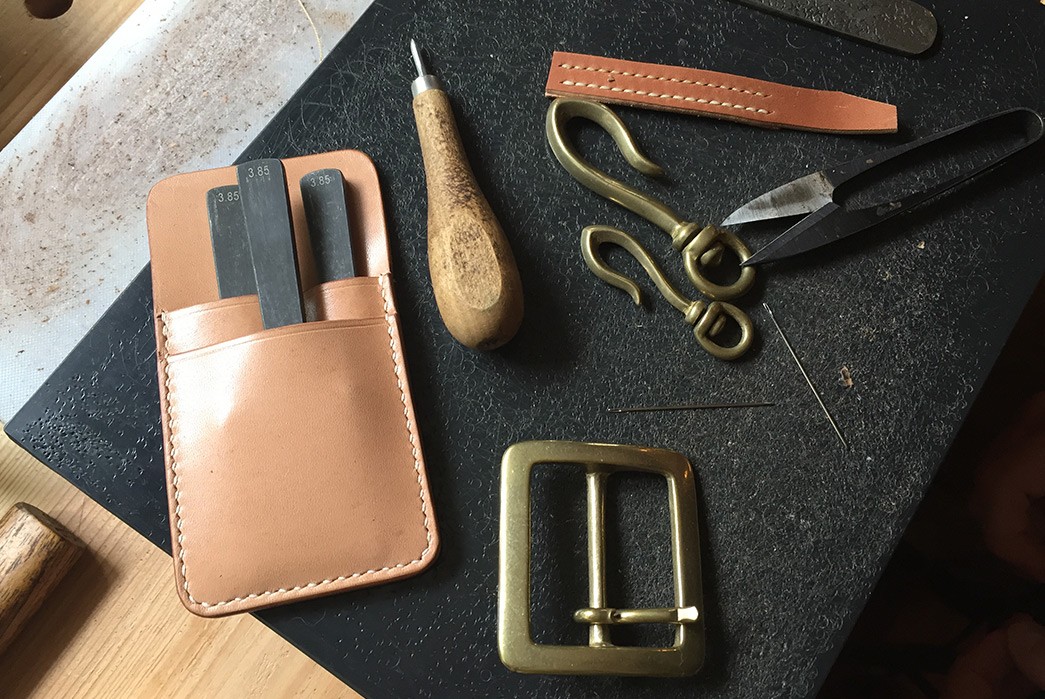
Tools and signature hardware. Each new tool gets its own custom leather case.
LL: What do you know now that you didn’t know five years ago in terms of your work?
NH: I think that a big part of the way Hollows Leather progresses has to do with any time I learn a better way to do things I don’t allow myself to go back even if the new way takes a lot more time or costs more. I have at times struggled with the notion that I should be trying to make cheaper to fulfill a particular niche. I know that I have customers who wish that they could afford more of the stuff that I make which makes me want to make more affordable things. But any time that I have experimented with that (making cheaper items) it hasn’t gone well. It doesn’t sit well with me and in the end customers don’t seem to want it either.
And somewhat related to that, I suppose, is just the idea of staying pretty small as a brand. I’ve had a lot of opportunities to work with pretty big companies but it would have been a very weird sort of match up and so I have turned down a lot of those. I have seen peers also take a shot at a bigger deal and it usually doesn’t go well. I think that staying small and staying in control has been have been one of the better decisions that I have made. And hopefully, I don’t end up regretting it when the workwear trend passes and I have missed opportunities. It still feels like staying small has been the right move.
LL: Do you think the workwear trend is ending?
NH: I think that it is probably ending as the primary men’s clothing trend. I think that the majority of the people who are invested in the ideas beyond the aesthetic are probably in it for the long haul.
LL: What are some clothing brands you like?
NH: Freewheelers is definitely the brand that I buy the most. I like them because they make designs that are historically inspired but are not necessarily 100% accurate. I think a lot of people use the term “plausibility” to refer to the way their stuff is designed. The term plausibility came from Mister Freedom. It’s used as a way to characterize whether or not a garment could have plausibly existed during a particular moment in history.
Freewheelers stuff is not an exact historical reproduction, but rather, very era inspired. There is something a little more fun about that than there is with the meticulous reproductions that you see from companies like Real McCoys or Buzz Ricksons. From the Mister Freedom website: “MFSC® is not about reproductions or trends, but creates historically plausible original clothes that never existed but could have.”
LL: What is your favorite garment?
NH: If I had to pick a single one, it would be the denim shirt from Mister Freedom, the Liberty CPO. It is a cult status item. I think that it has gone back to sanity but at one point one sold on eBay for $1400.
Three Artifacts
I asked Hollows to provide photos documentation and descriptions of three artifacts that define his work.
1. The Lodestone Bracelet
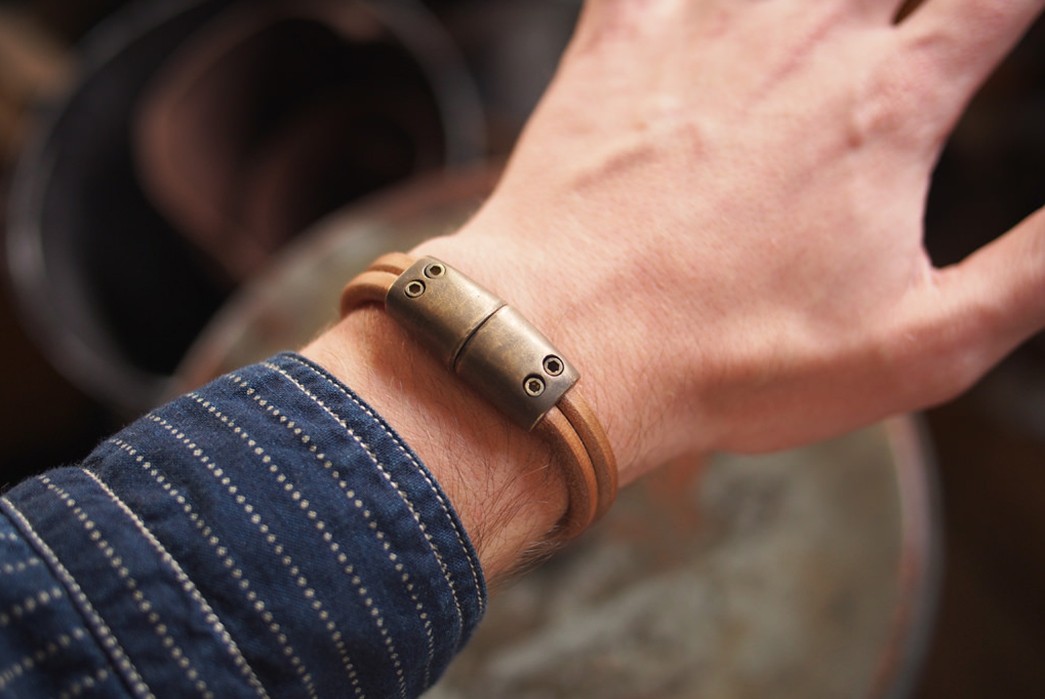
The Lodestone Bracelet is a collaboration with Cat Bates, a Portland, Maine-based jeweler who renders natural and nautical-inspired pieces in brass, bronze, sterling and sometimes unusual alloys like shibuichi. It’s made up of round leather cord with a magnetic clasp that’s built to be beautiful and serviceable for a long life.
2. The Westbound Mid-length Wallet
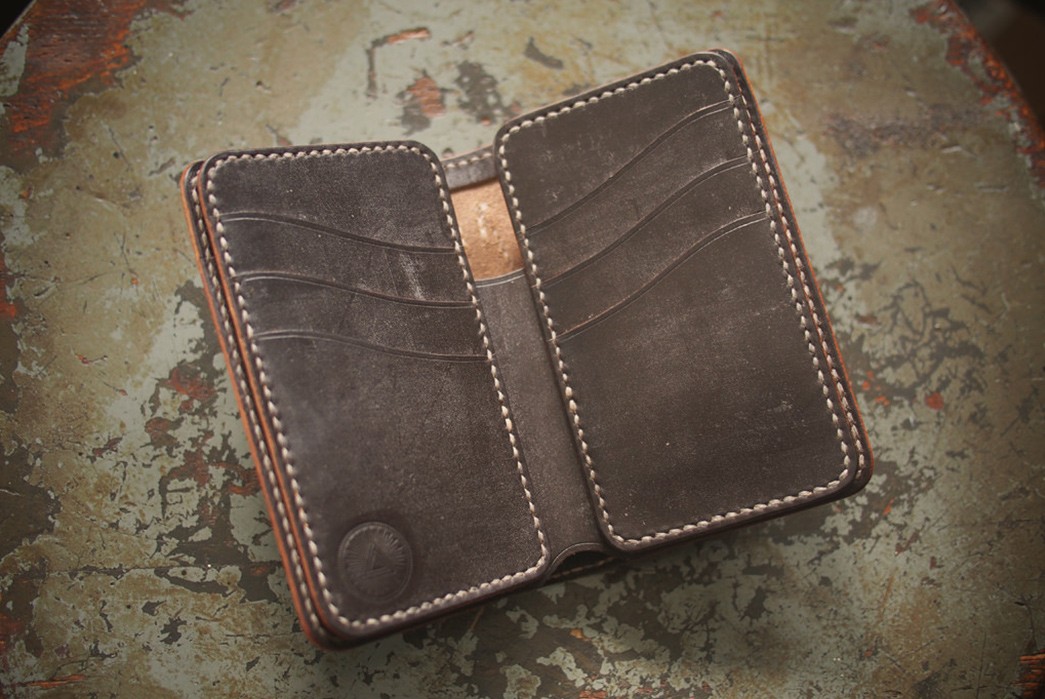
The Westbound Mid-length wallet is my most refined design. I’ve made very small, often invisible changes to this pattern many times over the years. I expect that the micro-improvements will continue, but I’m very happy with where it’s at right now. These are fairly time consuming to make, so they’re not often available.
3. The Trail Belt
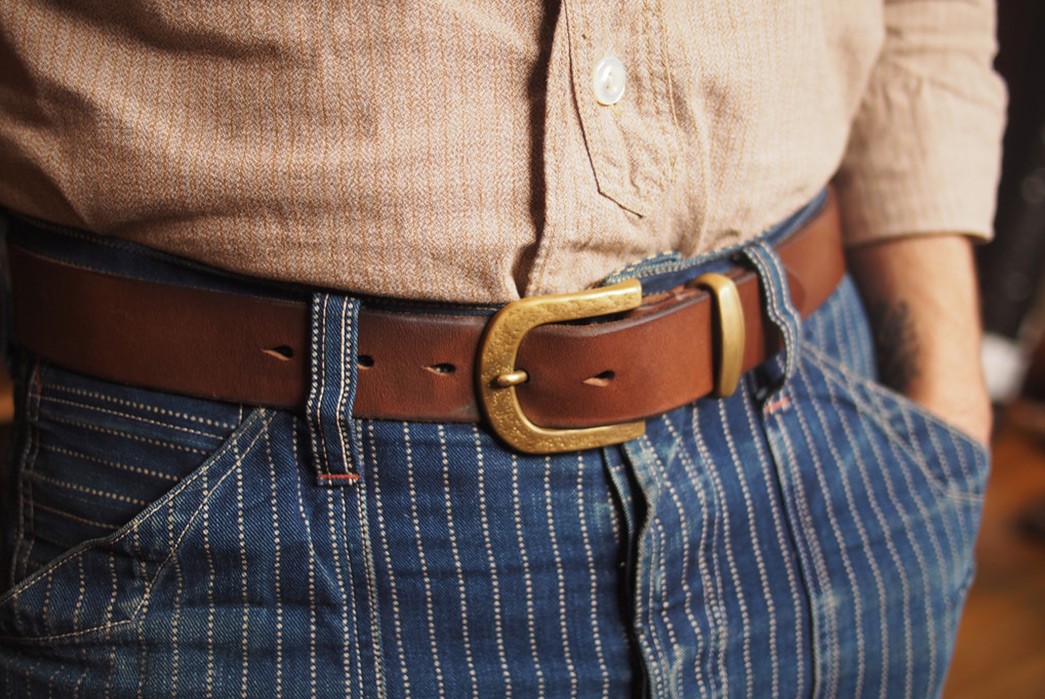
The Trail belt is my personal favorite, though a bit of an underdog popularity-wise. I think it’s a good mix between rugged and refined, and the texture on the buckle adds a lot of character as the brass begins to patina and wear in along with the leather.
To learn more about Nicholas Hollows and his brand, Hollows Leather, head over to their official website.

